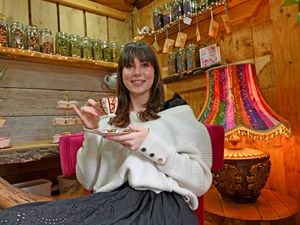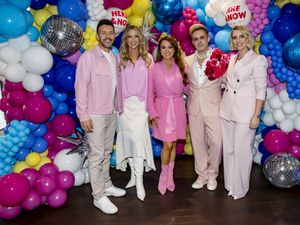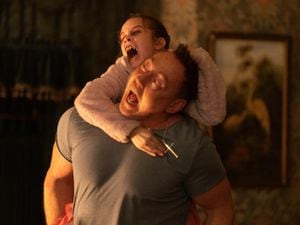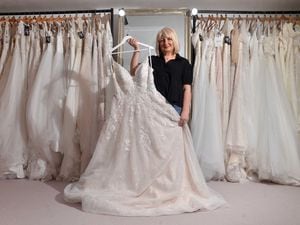Tackling clutter in our homes - what it's like to be a professional organiser
Hannah Bradley loves clutter – in fact it’s ‘the messier the better’ for her when it comes to tackling chaos in our homes.
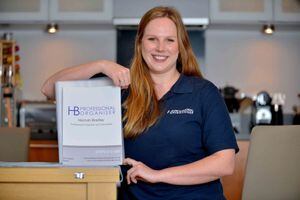
“I absolutely love messy houses because I can get stuck in and see big changes,” says the 28-year-old, who has been working as a professional organiser for almost four years.
She offers a helping hand to people who want restore calm and order when they’ve become too overwhelmed by their belongings.
Jobs can range from helping someone who is moving home or downsizing to organising a teenager’s bedroom ahead of exam revision season.
Hannah, who is a member of the Association of Professional Declutterers and Organisers (APDO), can also be called upon to help get ready for a new baby’s arrival or organising children’s bedrooms or playrooms.
“Sorting out a room might not seem like much to someone from the outside but it can really change their life and make someone happier by giving them more time to spend with their family,” she explains.
Her love of organising started at a young age, Hannah tells Weekend. “Ever since I was little I’ve liked things to be neat and tidy. My sister is the opposite but my mum is like me and likes things to be organised,” she says.
But it wasn’t until she was working as a junior designer and stylist at a showhome company and looking for a change of direction that she discovered being a professional organiser was something she could do for a living.
“An Australian friend told me they have professional organisers over there – I never knew there was such a job. I did some research and became a member of APDO. I decided to give it go and it’s been great,” explains Hannah.
When she’s first approached about a job, she will offer a free consultation to find out what the issues are and how she can help. “I get to their house and find out what the client wants to do with the space they have and if other storage solutions are needed.
“I set a plan in place and then we got through one area or room at a time, getting everything out of drawers and cupboards and putting in to piles of what to keep and what to get rid off. The ‘get rid’ pile may be things to recycle, donate to charity or relocate to another area in the area.
“I ask questions like when did you last use it or when did you last wear it to get the client to think about the items and whether they want them to stay and have a place in their home
“I also ask people where they use an item as it makes sense to keep it where it’s used.
“I know that when people have a big house that it’s going to be a big job because if you’ve got a big house you’re going to fill the space. If you’ve got extra wardrobes you’re going to put clothes in them. If you’ve got a small apartment like I have then you’ve got less space to fill and you’ve to keep on top of it more,” says Hannah, who has a degree in art history and a masters in art gallery and museum studies.
The job does come with some challenges though. “Sometimes the client’s family can be a challenge because they might start going through the stuff they’re getting rid of and want to bring things back into the home
“It can be difficult when people want to have a minimalist home but then they aren’t willing to get rid of anything.
“I never force people to get rid of anything but if you want to make a big change then you will need to part with some things.
“But most people are open to it and understand the process because they know it’s going to make such a difference,” Hannah tells us.
Netflix’s Tidying Up Marie Kondo sparked a decluttering frenzy across the nation earlier this year and the Japanese tidying guru explained her belief that only things that ‘spark job’ should have a place in our homes.
“It’s an interesting approach but I don’t think you throw away everything that doesn’t spark joy because some things that you need to keep are never going to spark joy. My car insurance policy doesn’t spark joy because it’s really expensive but that doesn’t mean I can just throw it away. But you can pick and choose what you take from her method and apply it how you want,” says Hannah.
The biggest cluttering hotspots in our homes tend to be paperwork and clothing, she tells Weekend.
“Paperwork is tricky because even though we’re moving to paperless there can still be a lot of paper coming into a homes and it doesn’t stop.
And it’s so easy to go out and buy cheap new clothes and that can get out of control,” explains Hannah, who lives in Birmingham and works across the Midlands.
Her tips for keeping on top of clutter and ensuring everything stays tidy and organised is to ‘do a little bit everyday’. “It’s better to spend say 15 minutes a day putting everything away then doing it all in one as it will be too daunting.
“Also make sure everything has a home because then you won’t have to think, you’re just know exactly where it goes and that will save you time,” she tells us
It’s a dream job for the University of Manchester graduate. “I enjoy meeting people and seeing how it makes a difference in somebody’s life
“Sometimes I’m the only person to have walked into their house for ages because they’ve been too embarrassed to have friends and family around.
“It’s a reallprivilege to be able to help them be happier in their homes,” says Hannah.
l See www.hbprofessionalorganiser.co.uk
By Heather Large


